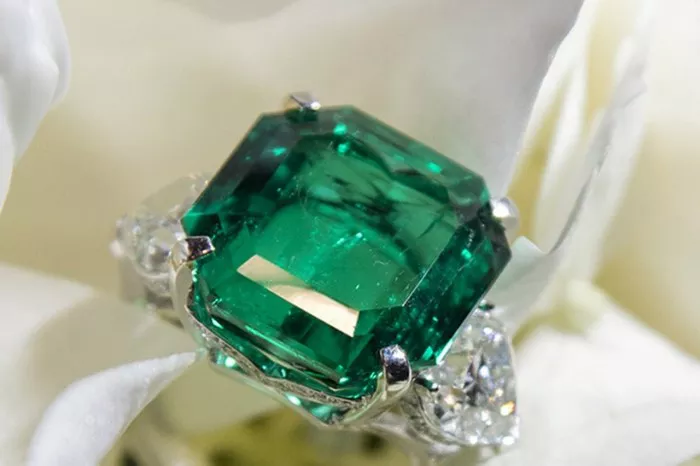When it comes to precious gemstones, emeralds and diamonds are two of the most coveted choices for engagement rings and fine jewelry. Both stones have a rich history and distinct characteristics that contribute to their allure and value. However, the question often arises: are emerald rings more expensive than diamonds? To answer this, we must delve into several factors that influence the pricing of these exquisite gems.
The Intricacies of Gemstone Pricing
Diamonds: The Standard of Beauty and Value
Diamonds have long been considered the ultimate symbol of wealth, love, and commitment. They are renowned for their brilliance, fire, and exceptional hardness. The value of diamonds is primarily determined by the four Cs: Carat weight, Cut, Color, and Clarity. Each of these factors plays a significant role in determining a diamond’s price.
Carat Weight: The size of the diamond is one of the most straightforward indicators of its value. Larger diamonds are rarer and thus more expensive.
Cut: The quality of a diamond’s cut impacts its brilliance and sparkle. Well-cut diamonds reflect light beautifully, increasing their desirability and cost.
Color: Diamonds are graded on a color scale from D (colorless) to Z (light yellow or brown). Colorless diamonds are rarer and therefore more valuable.
Clarity: The presence of internal or external flaws, known as inclusions and blemishes, affects a diamond’s clarity. Fewer inclusions mean a higher clarity grade and a higher price.
Emeralds: The Gemstone of Kings
Emeralds, prized for their rich green color, have been cherished for thousands of years. They are considered a symbol of rebirth and love. Unlike diamonds, emeralds are valued primarily for their color and clarity.
Color: The most valuable emeralds exhibit a deep, vivid green color. The presence of chromium, vanadium, and iron within the stone creates this iconic hue. The more intense and evenly distributed the color, the higher the value.
Clarity: Emeralds are known for their inclusions, often referred to as “jardin” (French for garden) due to their appearance. While inclusions are more acceptable in emeralds than in diamonds, stones with fewer and less noticeable inclusions are more valuable.
Cut: The cut of an emerald affects its color and brilliance. A well-cut emerald can enhance its natural beauty, making it appear more vibrant.
Carat Weight: Similar to diamonds, larger emeralds are rarer and thus more expensive. However, because emeralds are often found in smaller sizes, large, high-quality emeralds can command extremely high prices.
Factors Influencing Price Comparisons
Rarity and Market Demand
Both emeralds and diamonds are rare, but their rarity is perceived differently in the market. Diamonds are more abundant in terms of overall availability, but high-quality, large diamonds are rare and highly sought after. Emeralds, particularly those of high quality with vivid color and good clarity, are rarer and can sometimes surpass diamonds in price per carat.
Treatment and Enhancement
Most emeralds undergo treatment to improve their clarity and color. These treatments, typically oiling or resin filling, are widely accepted in the gem trade but can affect the price. Untreated emeralds with exceptional clarity and color are extremely rare and can be significantly more expensive. In contrast, diamonds are often sold untreated, and any treatments (such as laser drilling or fracture filling) can reduce their value.
Historical and Cultural Significance
Emeralds have been cherished since ancient times, associated with royalty and revered by cultures worldwide. This historical and cultural significance can add to their desirability and price. Diamonds, while also historically significant, have gained immense popularity in the last century due to successful marketing campaigns, especially for engagement rings.
Supply Chain and Ethical Considerations
The sourcing and ethical implications of gemstone mining play a role in their pricing. Diamonds have faced scrutiny over conflict diamonds, leading to the establishment of the Kimberley Process to ensure ethical sourcing. Emeralds, primarily sourced from Colombia, Zambia, and Brazil, also have ethical considerations. The provenance and ethical certification can influence the price of both gemstones.
Case Studies: Comparing Specific Examples
High-Quality Examples
A top-tier emerald with a deep, vivid green color and minimal inclusions can fetch higher prices per carat than a high-quality diamond of similar size. For instance, an exceptional 5-carat emerald might be more expensive than a 5-carat diamond if the emerald’s color and clarity are superior.
Average Quality Comparisons
When comparing average quality stones, diamonds often hold a higher price point due to their consistent demand and the marketing efforts that position them as the preferred choice for engagement rings. An average quality 1-carat diamond typically costs more than an average quality 1-carat emerald.
See Also: Do Sapphires Scratch Easily
Market Trends and Consumer Preferences
Engagement Ring Trends
Diamonds have dominated the engagement ring market for decades, with most consumers associating diamonds with the ideal choice for such an important purchase. This strong market demand keeps diamond prices high. However, there has been a growing interest in alternative gemstones, including emeralds, as unique and personalized options for engagement rings.
Investment Potential
Both diamonds and emeralds can be considered investment pieces, but their market dynamics differ. Diamonds have a more stable market with consistent demand, making them a safer investment. Emeralds, while potentially more volatile, can offer significant returns if they are of exceptional quality and provenance.
Conclusion
In conclusion, whether emerald rings are more expensive than diamonds depends on various factors, including the quality, size, and market demand for each gemstone. High-quality emeralds with exceptional color and clarity can surpass diamonds in price per carat. However, diamonds generally maintain higher prices due to their consistent market demand and established value perception.
Ultimately, the choice between emeralds and diamonds should be based on personal preference, budget, and the specific qualities of the gemstones available. Both stones offer unique beauty and significance, making them cherished choices for fine jewelry and engagement rings.

